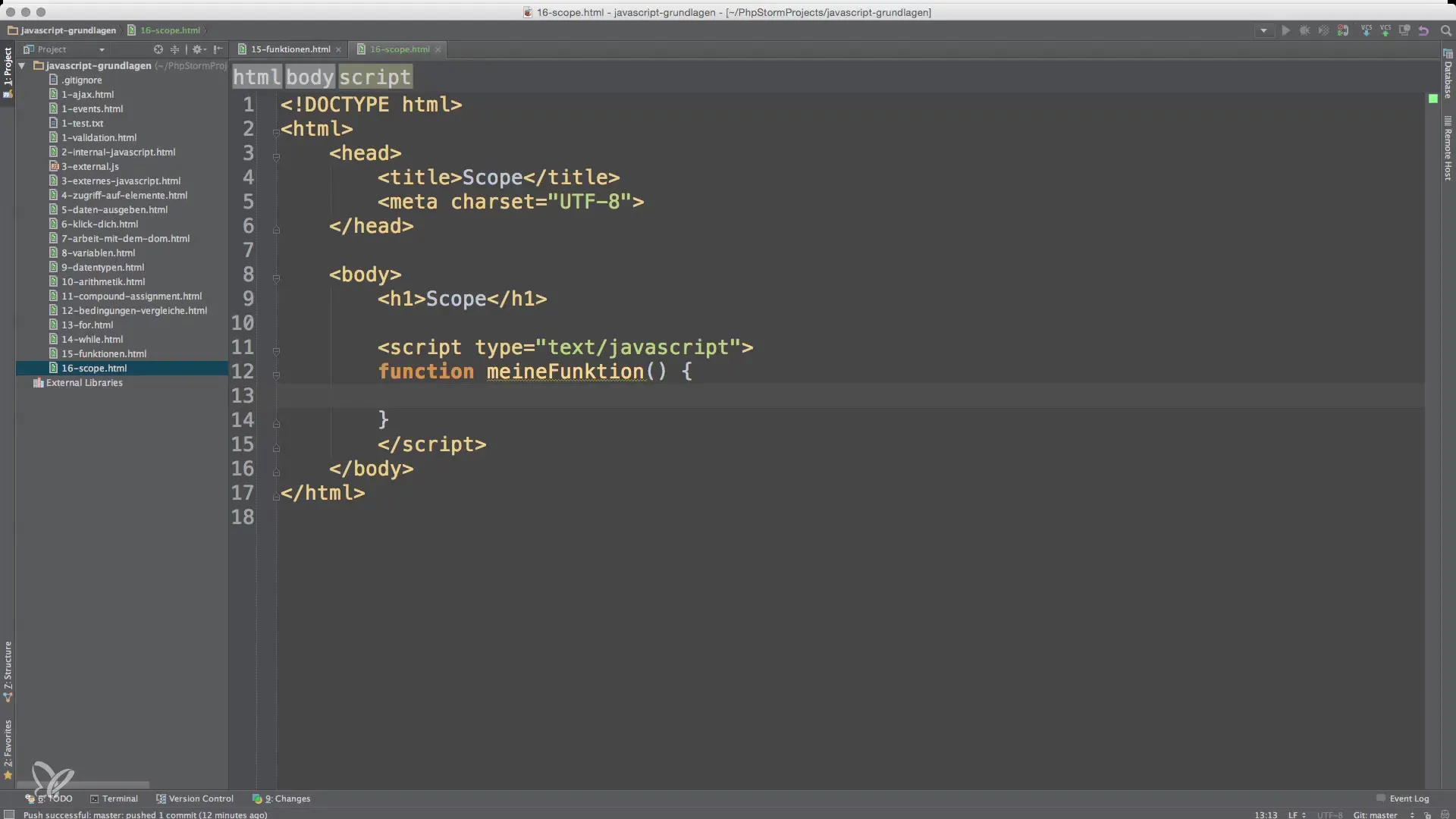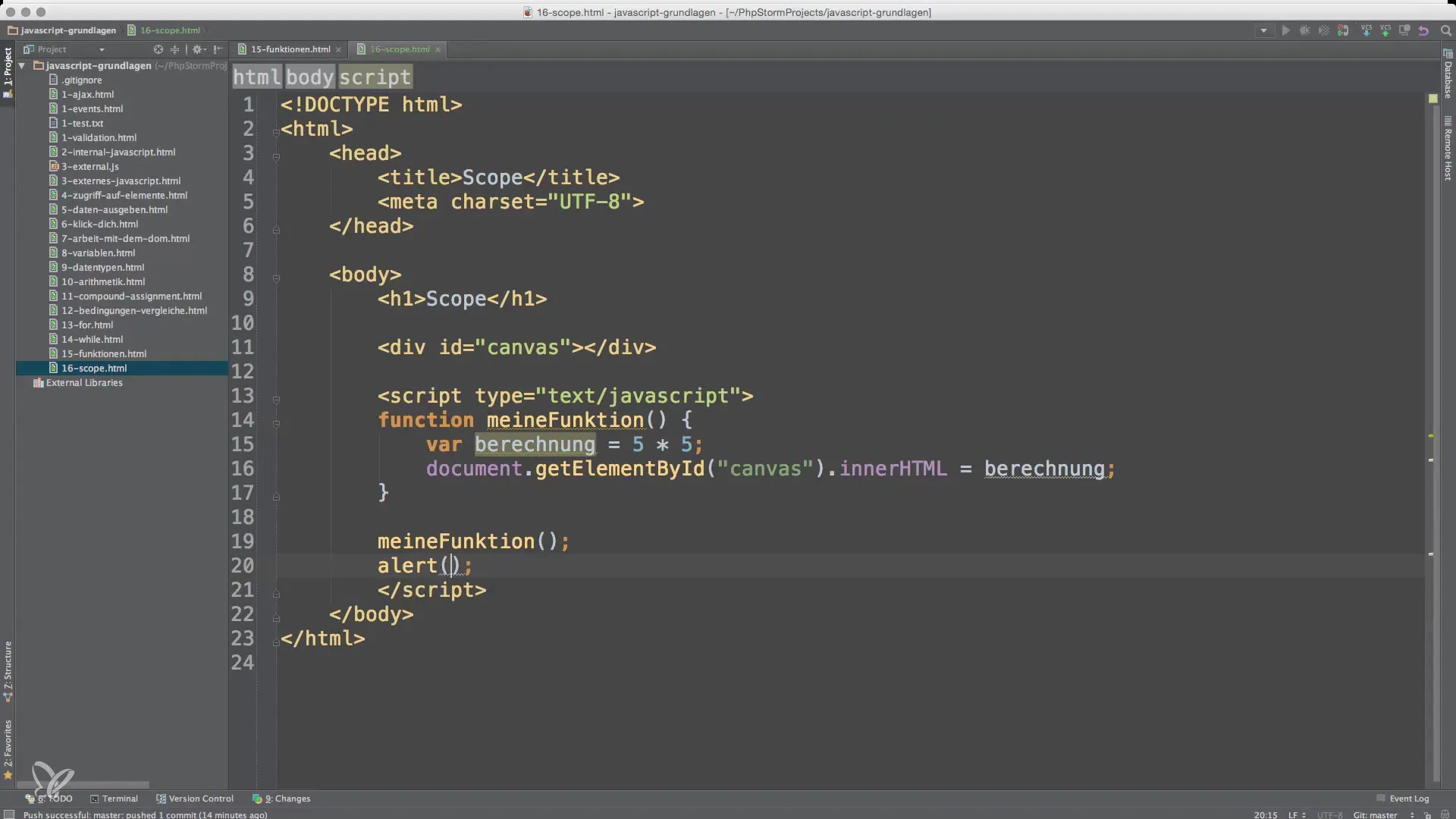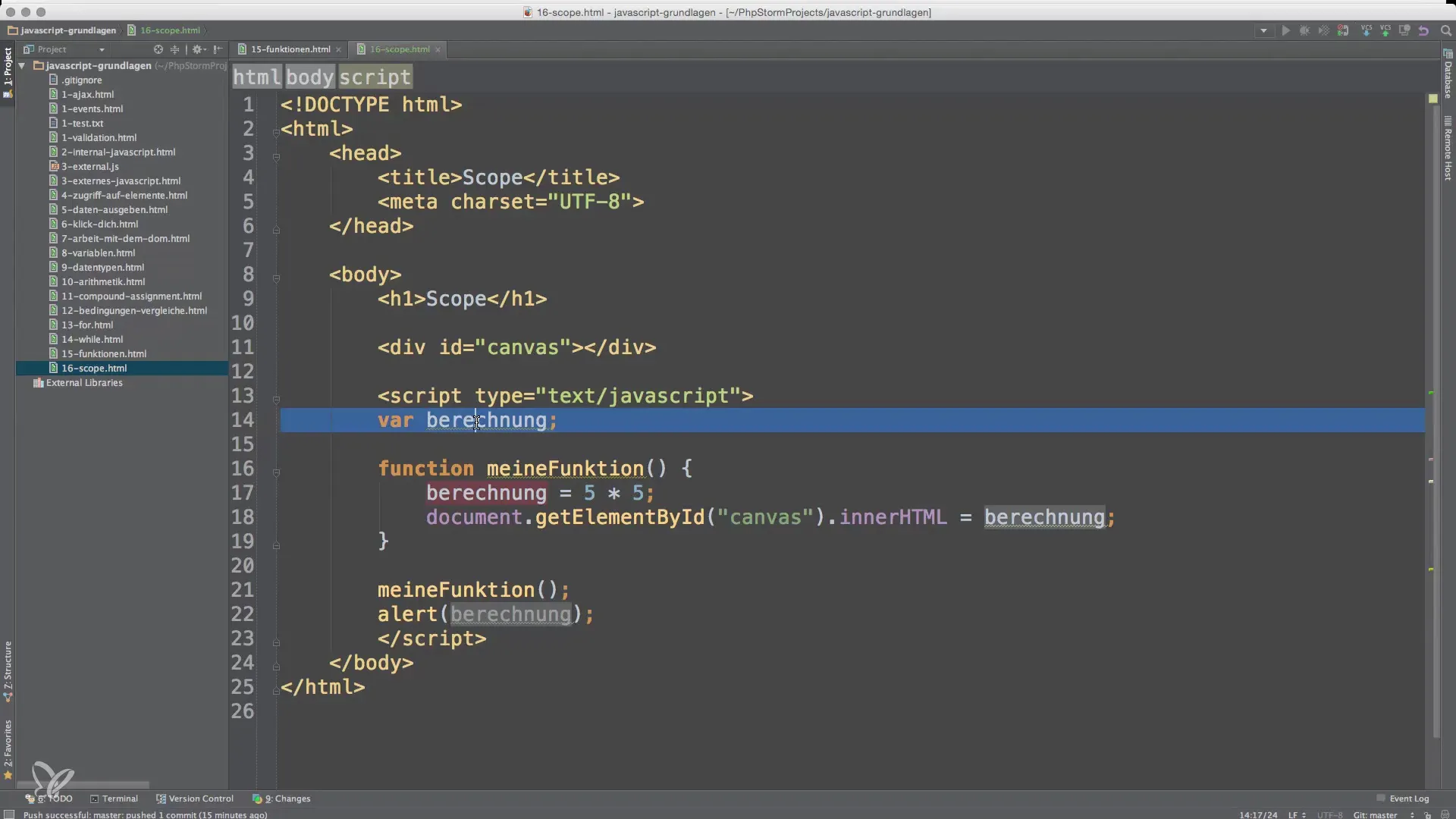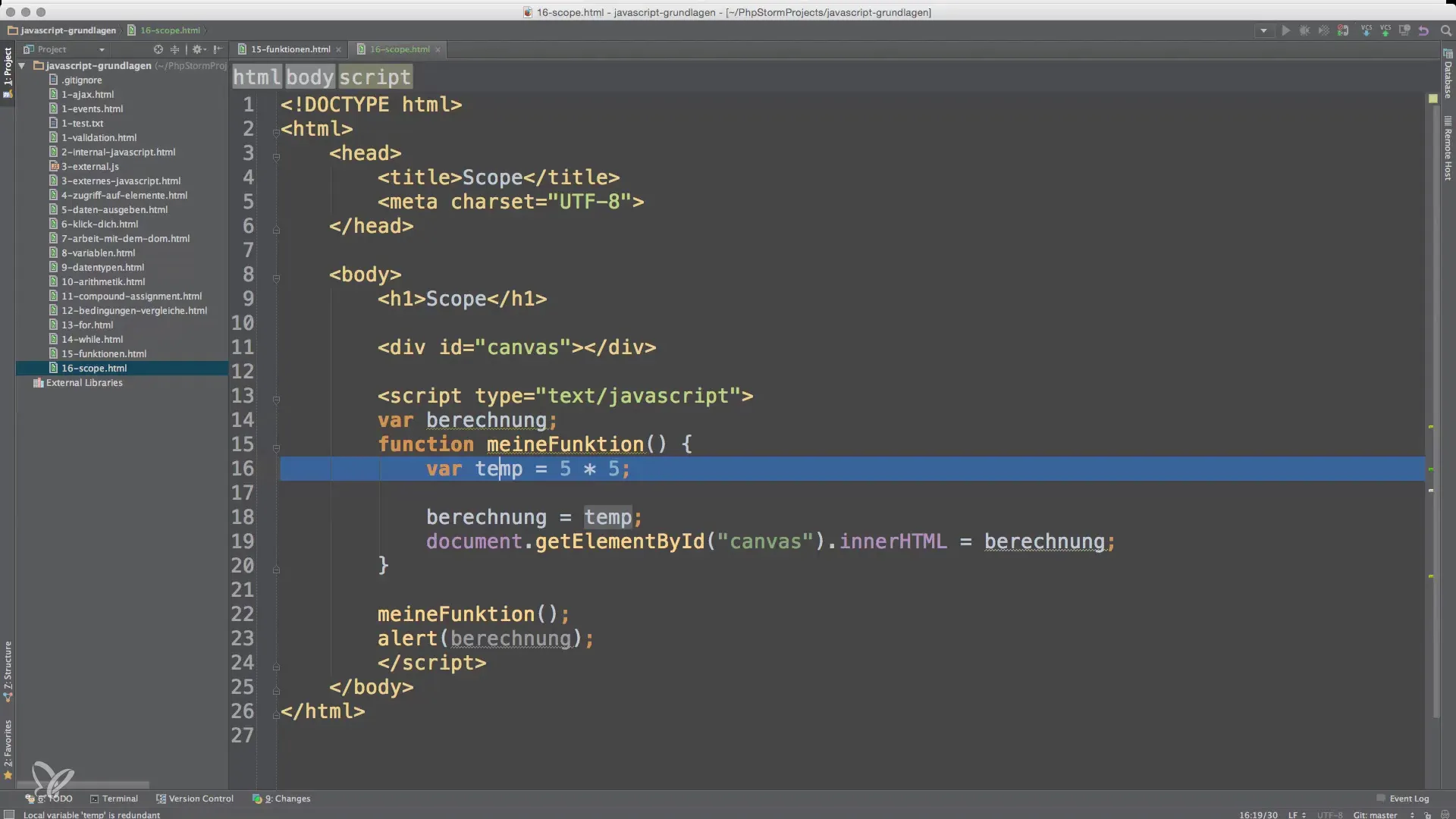In the field of programming, understanding scopes is crucial for developing effective and clean software. Within JavaScript, there are various types of scopes, particularly functional scopes. In this guide, you will explore the fundamentals of this concept and receive helpful examples for better illustration.
Key Insights
- A scope determines where variables exist in a program.
- Functional scopes create local variables that are not accessible outside the function.
- Global variables are available throughout the script, which can lead to potential naming conflicts.
- The lifespan of variables is tied to their usage within functions.
Step-by-Step Guide
1. A Simple Example of a Scope
To understand the functional scope, let's begin with a simple function. Within this function, you declare a local variable. It is only valid within the function.
The calculation is performed here, and the result is displayed in an HTML document. The output will be 25 when you call the function.

2. Attempting to Access Local Variables
If you try to access the local variable outside of the function, you will run into issues. This means you cannot reference the variable result from outside the function.
Since the variable result does not exist, you will receive an error when trying to call it. This is an important indication of the scope of variables.

3. Creating Global Variables
To make a variable globally available, you can declare it outside of a function. This type of variable is accessible throughout the entire script.
function calculation() { result = 5 * 5; // Changes the global variable }
Here, the variable result is created in the global namespace. If you now call the function, the value of result will be set to 25, and you can also access this value outside of the function.

4. Difference Between Local and Global Namespace
The crucial difference lies in where the variables are declared. Local variables, declared inside a function, exist only for the duration of the function's execution. Declared globally, they are visible for the entire script.
If you want to modify a local variable that exists in the global namespace, you must ensure that the access method is correct.
5. Implicit Declaration of Variables
It is important to note that you can declare a variable without the keyword let or var. This makes the variable global as well.
Although this works, it is not the recommended practice as it makes your code less clear and can lead to unexpected conflicts.
6. Lifespan of Variables
The lifespan of a variable is another important concept. Local variables exist only as long as the function is active. After the function ends, the local variable is deleted.

7. Clarity Through Explicit Declaration
To make your script clearer, you should always explicitly declare variables. This helps you keep track of where and how many variables exist, and prevents unwanted global variables from arising.
8. Conclusion on Scopes
Scopes in JavaScript are fundamental for understanding how variables operate within functions. JavaScript distinguishes between local and global namespaces. A deep understanding of this concept is crucial for programming cleanly and effectively.
Summary – Fundamentals of Scopes in JavaScript
Understanding scopes in JavaScript is of great importance for effective programming. By understanding the difference between local and global variables, you can create effective and maintainable code structures.
Frequently Asked Questions
What are scopes?Scopes determine where variables exist in a program and what access rights they have.
What is the difference between local and global variables?Local variables exist only within a function, while global variables are available throughout the entire script.
How long do local variables exist?Local variables exist only during the execution of the function in which they are declared.
Why should variables be explicitly declared?Explicit declarations keep the code clear and prevent unwanted global variables.


